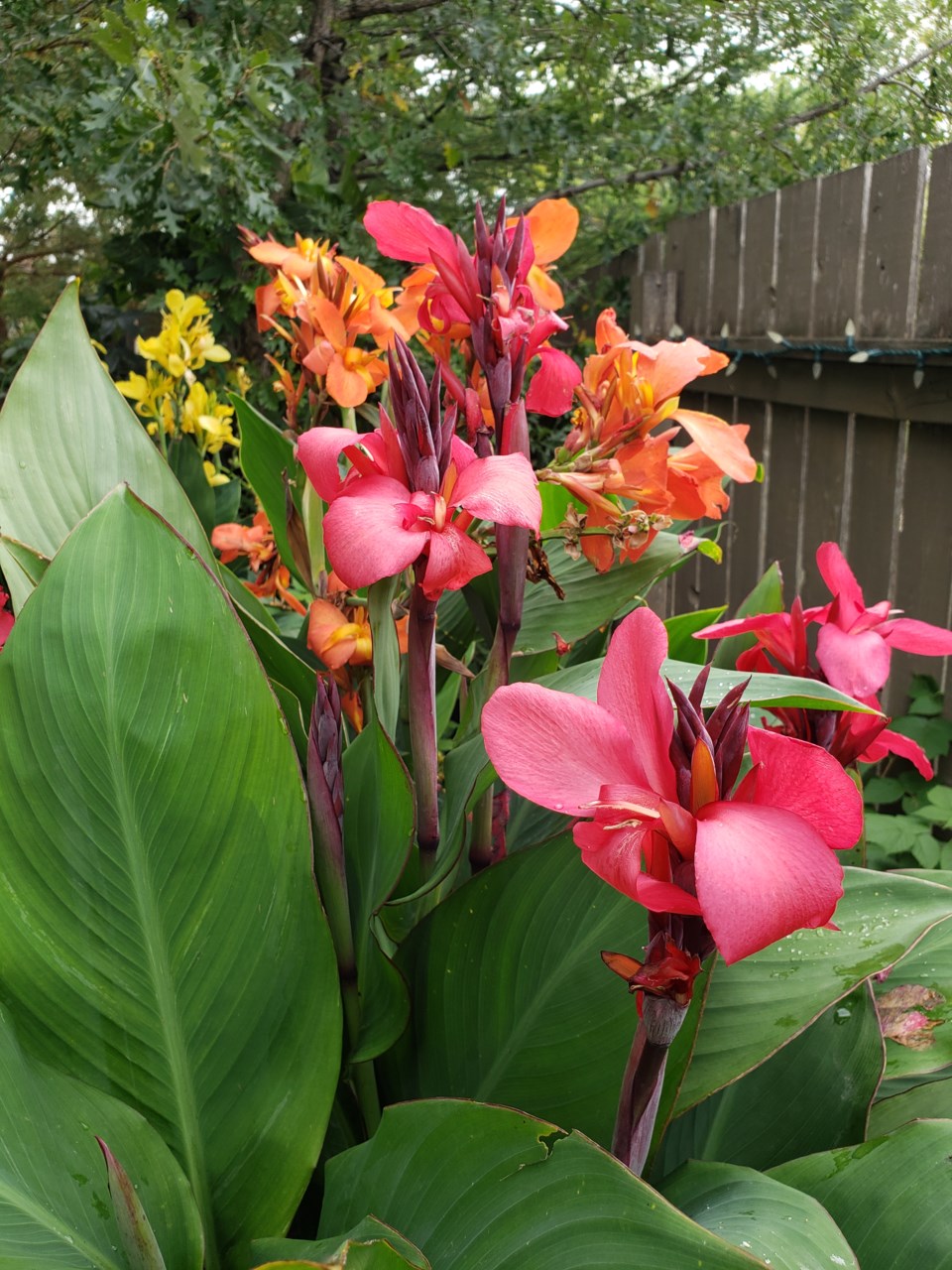August in the garden is truly spectacular. If you are a lover of tender or summer flowering bulbs, then you can join me in the bittersweet joy of August. Along with all the other showy annuals we may have growing it is the exotic plants that are show stopping at this time of year. Unfortunately, we are already starting to see the temperatures drop overnight to single digits, and it is with a heavy heart that I accept that autumn is just around the corner.
These tender summer flowering bulbs are native to the tropical and sub-tropical regions and thus need some special care as autumn approaches. Tender bulbs are those plants that have fleshy storage structures (bulbs, corms, tubers and roots) which will meet their demise over winter if they are not brought indoors out of the extremely cold winter temperatures. It is important to dig up these structures and bring them into a warmer area for storage throughout the winter.
For most of the plants that we may grow it is best that they be lifted after the foliage is killed by frost or have dried up. However, if we get really cold temperatures with our first frost then it is important to dig them before the mercury dips in order to preserve the integrity of the bulb. Dig the bulb structures carefully to ensure that they are not damaged. Loosen the soil on all sides of the plant before lifting the clump of roots and soil without damage. Cuts or other damage will allow disease organisms to enter which is not advisable for good storage.
Most bulbs are best dried with the soil still adhered but if you are storing dahlia or canna bulbs it is advisable to gently wash the soil away from the root tissue. Gladiolas are a special condition in that they should not be washed but allowed to dry thoroughly before gently removing any soil that is adhering.

Most bulbs will need a curing period before storage. Begonias, dahlias, cannas, callas and caladium need a short period of drying for one to three days in a room that is away from direct sunlight and winds that are drying. Gladiolas and oxalis will need about three weeks of drying at just under room temperature in a dry but well ventilated area. Ensure you examine all tissues and those that are infested or soft should likely be discarded.
It is important to label all stored plant material to ensure there is no confusion in spring. I personally like using paper bags for storage as labels are easily written on the outside. Throughout the storage period, check regularly for any rotting or other damage.
Acidanthera spp. is a corm and should be stored at around 35 to 40 degrees Fahrenheit (1.6 to 4.4 C).
Begonia x tuberhybrida is a tuberous root and should be stored at about 50 degrees F (10 C). Store is sphagnum peat moss or vermiculite.
Caladium bicolor is a tuber and should be stored at about 50 degrees F (10 C). Cure with remaining foliage and store in peat or vermiculite.
Zantedeschia spp. or Calla Lily is a rhizome and should be stored at about 50 degrees F (10 C). If possible let foliage dry off a few days before digging. Store is sphagnum, peat or vermiculite.
Canna x generalis is a rhizome and should be stored between 40 and 50 degrees F (4.4 to 10 C). Dig after frost has damaged foliage and the plant has dried a few days after digging.
Dahlia hybrids are a tuberous root and should be stored between 40 and 50 degrees F (4.4 to 10 C). Cure in high humidity and pack roots in sphagnum to avoid desiccation.
Gladiolus hybrids are a corm and should be stored between 35 and 40 degrees F (1.6 to 4.4 C). Cure 2 to 3 weeks prior to storage.
Hanbidge is the Lead Horticulturist with Orchid Horticulture. Find us at www.orchidhort.com; by email at [email protected]; on Facebook and on instagram at #orchidhort.
Tune into GROW Live on our Facebook page https://www.facebook.com/orchidhort or check out the Youtube channel GROW.




